I’m pleased to introduce my latest sound effects library, Bowling. It features a wide variety of high-quality stereo sounds from the sport of 10-pin bowling, captured from multiple perspectives at three different bowling alleys across the United States.
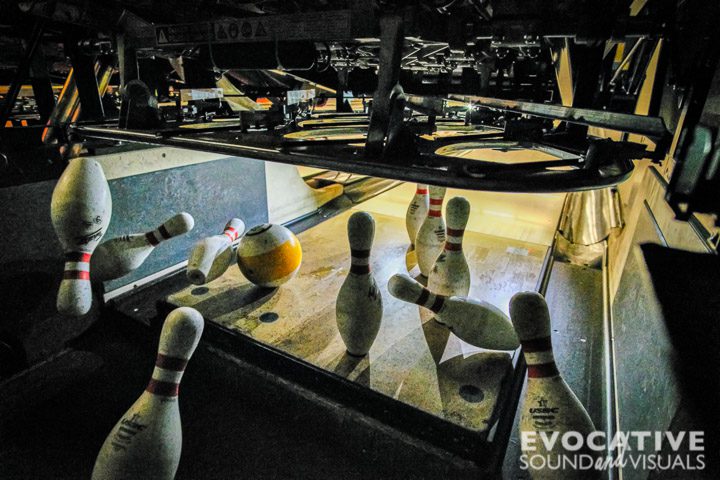
I visited a 40-lane, a 24-lane and an 8-lane alley, at different times of day and night to capture sounds during league practice with no music, and sounds with no one in the house besides myself and the manager. At all three lanes, managers granted me fantastic access. These include from above, behind and beside the mechanical pinsetter machines, next to the pin deck at the far end of the lanes. I also placed microphones down next to the foul line, the ball return behind the approach, the settee area (where bowlers sit), the concourse area (where bowlers find the snack machines and bar), and halfway down the service aisle beside the first lane. I followed a robot-like lane machine as it traveled up and down the lanes, laying down oil at just the right spots. Often times when a bowler releases the ball, there is a distinctive popping sound that can be heard when their thumb leaves the ball after a roll. I made sure to get that too.
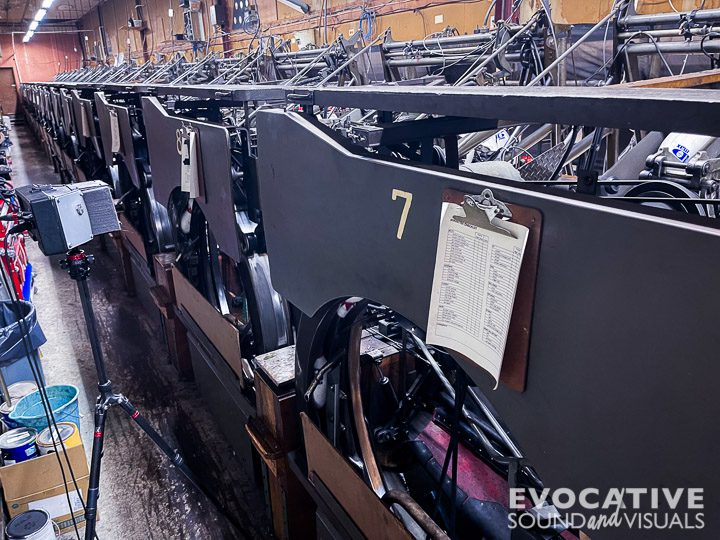
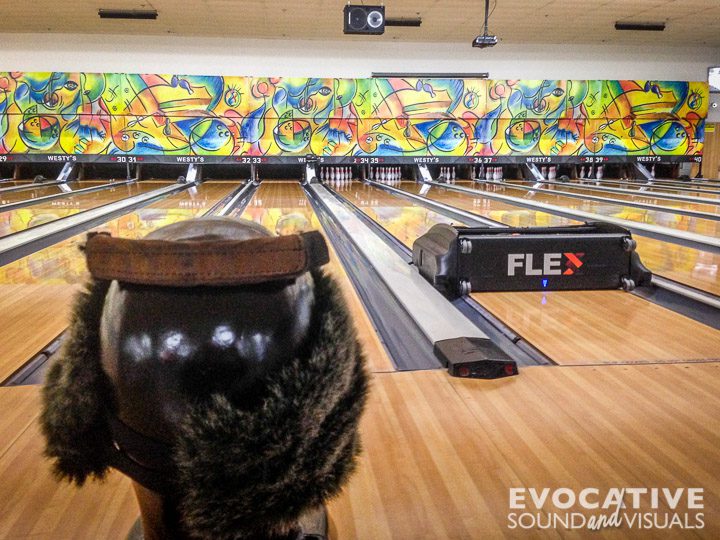
I was permitted to turn pinsetter machines off and on at the back of the house. This allowed me to record a machine in isolation, or several working simultaneously. I rolled (delivered is the term used by the United States Bowling Congress) down an alley with no machines running, including a gutter ball, on purpose, and a nine-pin roll. Machine noise can mask the whoosh of a ball passing by. Rolling with the machines turned off allowed me to get this delicate sound like I wanted.
My favorite sound in the library comes from all the pinsetters starting up for the day. To prevent a power surge, this occurs with a slight delay between machines. It’s a sound you don’t often hear unless you’re at the alley bright and early. I grabbed it in the middle of a 24-lane alley near the foul line for a nice stereo effect.
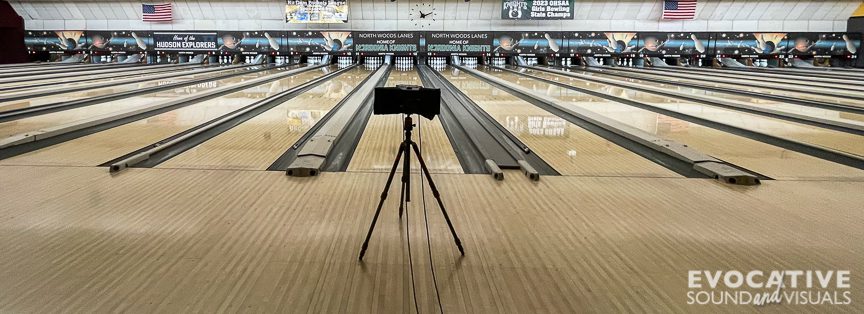
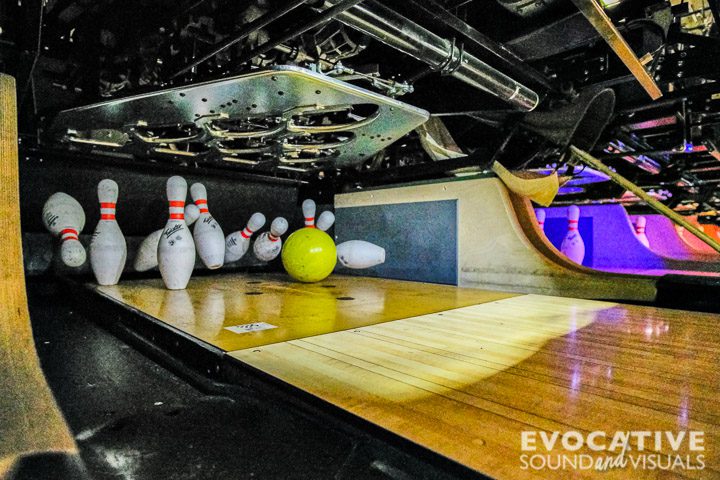
So slip on a pair of two-toned suede bowling shoes, those kind with their size stamped on the heel for all to see, and enjoy Bowling.
Listen to a Preview
Library Specifics
- 34 files, 44 minutes, 1.51 GB
- USC compliant
- Metadata applied via BWF and Soundly
Microphones and Recorders Used
- Audio Technica 3032 x 2 SASS with Sound Devices 702 recorder
- Clippy EM172 mics x 2 binaural with Sound Devices 702 recorder
- Line Audio CM3 x 2 ORTF with Sound Devices 702 recorder
- Audio Technica 3032 x 2 A/B with Sound Devices 702 recorder
- Barcus Berry contact mics x 2 with Sound Devices 702 recorder
Why I Recorded Bowling
Growing up, I remember my parents bowling in a Sunday night league for years. They’d head off to the bowling alley with their custom shoes and balls. Mom always rolled a blue one. We little kids would be left home to watch the Wonderful World of Disney under the watchful eye of our big sister. They’d come home smelling like a cigarette factory but we thought nothing of it. It’s just the way things were. In my early teens, I too took up bowling. I had a custom-made sparkling gold 10-pound ball (with swirls) and fancy shoes. No house ball for me thank you very much. Even so, I don’t think I ever got above 150. It was a short-lived hobby. That said, the sound of that bowling alley stuck with me.
Then, the movies Kingpin (1996) and The Big Lebowski (1998) came out. My wife and I religiously sit down to watch “The Dude,” and “Jesus” roll once a year. Like a lot of fans, we pretty much know all the lines by heart. It was only natural that I add these bowling alley sound effects to my collection.
The Future of Bowling Technology
The maintenance cost to operate pinsetter machines designed in the late 50s adds up. The 24-lane alley I visited recently goes through four gallons of oil a month, according to its manager. Bowling establishments are looking for alternatives to these aging machines. One such alternative is to use string pinspotters. Watch a video of this new technology here. What this means from a sound perspective is the mechanical sounds heard at the back end of a bowling alley will change. I’ve never seen nor heard a string pinsetter in person. I imagine it would be a much quieter bowling experience. Keep this in mind in your sound design.
Further Reading
Want to learn more about how a traditional pinsetter operates? This video by Jared Owen does a great job of explaining how a new Brunswick machine works. This Wikipedia page does a nice job explaining as well, as does this page from How Stuff Works.
The lane machine I recorded for this library puts down an oil pattern on the lane. There are a variety of patterns. This link, from the United States Bowling Congress, explains them in detail.
Click this link to spend the next five minutes of your life watching former US President Richard Nixon bowl at a two-lane alley deep within the White House. Sadly, the movie, made in 1971 and housed at the Richard Nixon Presidential Library and Museum, has no sound. Take note that he’s bowling over the line. To quote Walter from The Big Lebowski, “Smokey, this is not ‘Nam. This is bowling. There are rules.” Nixon could have taken a lesson from that film.
I recently found out that my father-in-law was a pinsetter in his junior high years. This was before the age of mechanical pinsetters when young boys would clear off deadwood and reset pins by hand. This link, from the Hart Cluett Museum in Troy, New York, provides a history lesson of this period. Notice that no one is wearing earplugs.

